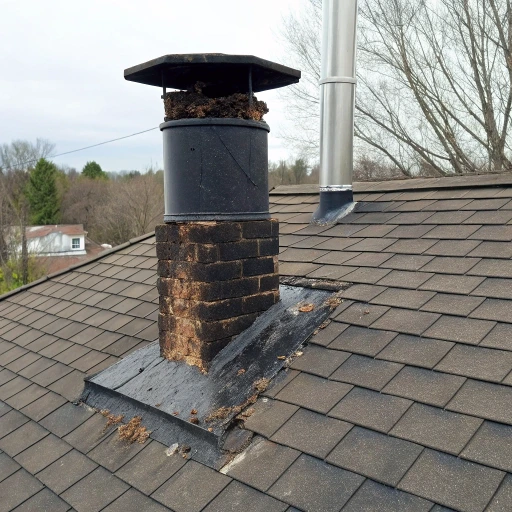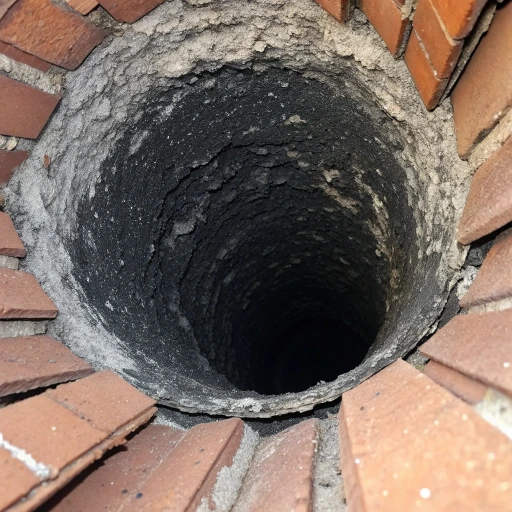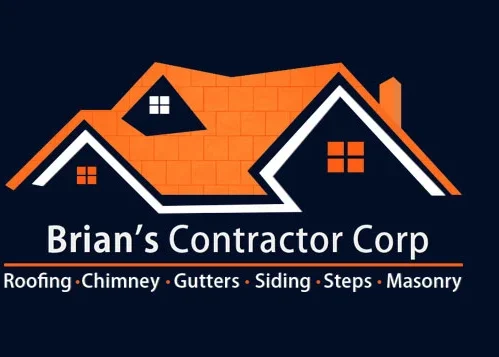
Creosote is a hidden danger that quietly accumulates inside chimneys, especially during colder months when fireplaces and wood stoves are in regular use. Creosote buildup prevention is critical, as this highly flammable residue—if left unchecked—can turn a routine fire into a serious household risk.
Over the years, we’ve worked with countless New York homeowners to address chimney safety issues and prevent the conditions that allow creosote to build up. From early-stage residue to dangerous blockages, we’ve seen how neglect can lead to emergency situations—and how simple, proactive maintenance can stop that from happening.
The real issue is awareness. Many homeowners don’t realize their chimney needs attention until warning signs appear—or worse, until damage is already done. In this guide, you’ll learn what causes creosote buildup, how to spot early indicators, and the key steps to safely maintain your chimney throughout the year.
What Is Creosote and Why It’s Dangerous for New York Homes

Creosote forms when wood burns in your fireplace and doesn’t get enough oxygen for complete combustion. Think of it like grease building up in a kitchen exhaust fan, except this substance is highly flammable and accumulates inside your chimney walls.
When smoke cools as it rises through your chimney, it condenses and sticks to the inner surfaces. Over time, these deposits harden into a tar-like substance that becomes increasingly dangerous with each fire you light.
The Three Stages of Creosote Formation
Stage 1 creosote appears as loose, flaky deposits that look similar to soot. You can often brush this away easily during regular cleaning. While manageable, even this early stage indicates your chimney needs attention.
Stage 2 creosote forms hard, crusty chunks that stick firmly to chimney walls. This stage requires professional removal because scraping it off becomes difficult and potentially dangerous for untrained individuals.
Stage 3 creosote creates a thick, glossy coating that looks like black tar. This advanced stage burns at extremely high temperatures, capable of damaging masonry and igniting nearby structural materials.
Why Our Climate Makes Prevention Critical
New York’s humid climate accelerates creosote formation in ways many homeowners don’t realize. High moisture levels in the air and firewood contribute to faster buildup, especially during cooler months when chimneys stay damp longer.
The seasonal temperature swings we experience here also cause expansion and contraction in chimney materials. This movement creates small cracks where creosote can penetrate deeper, making removal more challenging and fire risk higher. When these cracks compromise structural integrity, homeowners may face costly chimney rebuild projects rather than simple cleaning
How to Identify Creosote Buildup Warning Signs
Recognizing creosote problems early can prevent catastrophic damage to your home. Most warning signs are visible to homeowners, but knowing what to look for makes all the difference.
White staining on your exterior chimney often signals moisture problems that accelerate creosote formation. A strong, acrid smell coming from your fireplace, even when not in use, typically indicates significant buildup inside the flue.
Visual and Physical Signs Every Homeowner Should Know
Here are the warning signs you can identify yourself:
- Rust on your damper or firebox – moisture from creosote causes metal components to corrode faster
- Oily or tar-like deposits around the damper area that you can see when looking up into your fireplace
- Reduced draft – your fires struggle to start or smoke enters your room instead of going up the chimney
- Animals or birds avoiding your chimney area due to strong chemical odors
Most homeowners underestimate their creosote buildup, often by an entire stage. What appears minor from the fireplace opening can extend much farther up the flue, creating hidden fire risks.
When to Stop DIY Assessment and Call Professionals
You should immediately contact a professional chimney service if you notice any glossy, tar-like deposits or if your fireplace produces unusual odors. These conditions indicate Stage 2 or 3 creosote that requires specialized removal equipment.
Professional assessment becomes critical when you can’t clearly see the condition of your flue or when any visual inspection reveals thick, hard deposits. Your safety depends on accurate identification of creosote stages.
Proven Prevention Strategies That Actually Work
Effective creosote buildup prevention combines smart burning practices with regular maintenance. The strategies that work involve controlling both what you burn and how you burn it.
Prevention starts with understanding that creosote formation isn’t inevitable – it’s largely controllable through proper techniques and timing. We’ve helped thousands of New York families maintain clean, safe chimneys using these proven methods.
DIY Prevention Methods You Can Start Today
Proper wood selection makes the single biggest difference in creosote formation. Burning unseasoned wood creates significantly more buildup than properly dried hardwood due to cooler combustion and heavier smoke output.
Choose these wood types for cleaner burning:
- Seasoned hardwoods like oak, maple, or ash that have dried for at least six months
- Wood with moisture content below 20% – you can test this with an inexpensive moisture meter
- Split logs rather than whole pieces, which burn hotter and more completely
Your burning technique matters just as much as wood selection. Build hot, fast-burning fires rather than slow, smoldering ones. Open your damper fully before lighting and keep fires burning brightly rather than dampening them down.
Regular maintenance you can handle includes checking your chimney cap for damage and ensuring your damper opens and closes properly. In our experience providing chimney service throughout New York, homeowners who inspect these components monthly catch problems before they become dangerous.
Professional Chimney Services for Complete Protection
Our CSIA-certified technicians use specialized equipment to remove creosote safely and assess your chimney’s overall condition. Professional chimney sweep services include video inspection technology that reveals problems invisible to homeowners.
Annual chimney inspection provides the thorough assessment your safety requires. We examine flue liner integrity, check for structural damage, and remove creosote deposits using professional-grade tools designed for each stage of buildup.
Making the Right Decision – Professional Help vs DIY Approach
The key question isn’t whether you need creosote prevention – you absolutely do. The question is determining which prevention methods match your situation and skill level safely.
Understanding your limits protects both your safety and your wallet. Some prevention tasks suit motivated homeowners, while others require professional expertise and equipment.
Clear Decision Framework and Safety Guidelines
Handle yourself: Wood selection, proper burning techniques, basic visual inspections, and maintaining chimney caps and dampers. These activities carry minimal risk when you follow safety guidelines.
Require professional attention: Any creosote removal, flue liner inspection, structural assessments, and situations involving Stage 2 or 3 deposits. New York building codes require licensed professionals for these services because the risks are significant.
Here’s your decision framework: If you can see glossy deposits, smell strong odors, or notice reduced draft, contact a chimney repair professional immediately. These signs indicate conditions beyond safe DIY limits.
For routine prevention, you can maintain proper burning practices and monitor your chimney’s condition. However, never attempt to remove creosote deposits yourself – the tools and techniques required exceed typical homeowner capabilities.
Take Action Before Winter Arrives
Creosote buildup prevention isn’t complicated, but it requires consistent attention and respect for safety limits. The families we serve who follow proper prevention protocols enjoy safe, efficient fireplaces for decades.
Your next steps depend on your current situation. If you haven’t used your fireplace recently, start with proper wood selection and burning techniques. If you’ve been burning regularly, schedule a professional inspection to establish your baseline condition.
Don’t wait until you notice problems—preventive care is far less disruptive than full chimney restoration after fire damage. Creosote buildup often leads to structural harm that requires extensive rebuilding and safety mitigation.
Contact our roofing contractors to schedule your inspection and take the first step toward safer home heating. Your family’s safety is worth the investment in proper prevention.
Want to know what else your chimney might be hiding? To understand more about chimneys, click here for our expert guide on chimney safety, inspections, and maintenance tips.


